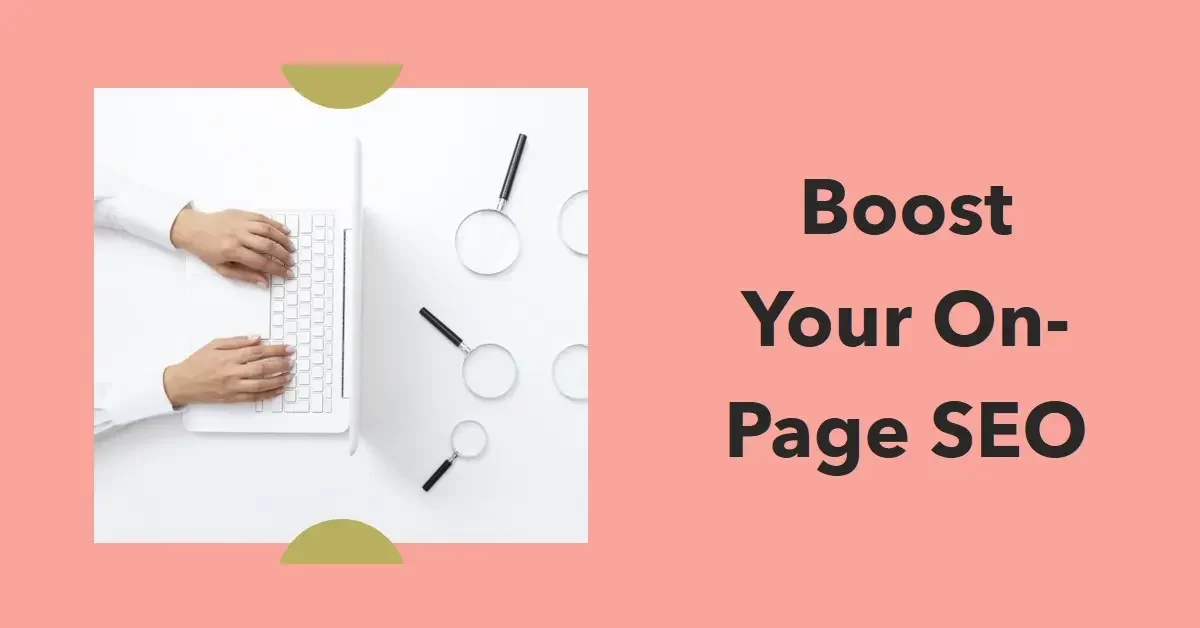Embarking on the journey to enhance your online visibility and drive organic traffic? Mastering on-page SEO is key. In the ever-evolving digital landscape, optimising your website’s on-page aspects is a strategic imperative. This blog unlocks eight invaluable tips to supercharge your on-page SEO strategy .
Strengthen your digital presence and unlock the potential for increased visibility with these actionable insights.
Optimising URL Structure
An optimised URL structure is foundational for effective on-page SEO. Ensure that your URLs are concise, descriptive, and user-friendly. Incorporate relevant keywords to convey the page’s content accurately. Avoid cryptic characters and prioritise readability. A well-structured URL not only aids search engines in understanding your page but also enhances the user experience. Consider organising URLs logically, mirroring the site’s hierarchy.
For instance, visit www.yourwebsite.com/category/page. This not only contributes to a cleaner website architecture but also signals to search engines the significance of each page. By refining your URL structure, you lay a robust foundation for improved search engine rankings and user navigation.
Content Development
Establishing authority is paramount for businesses seeking online prominence, and content development serves as a pivotal tool in this endeavour. High-quality, relevant content not only engages your audience but also positions your brand as an authoritative voice within your industry.
By offering valuable insights, addressing customer pain points, and showcasing expertise, your content becomes a go-to resource. This not only fosters trust with your audience but also attracts backlinks, a crucial component of search engine algorithms.
Consistent, authoritative content creation not only boosts your brand’s credibility but also significantly contributes to heightened search engine rankings and sustained online success.
Internal Linking
Internal linking is a strategic on-page SEO practice that holds the power to enhance your website’s structure and search engine visibility. By connecting relevant pages within your site through hyperlinks, you guide both users and search engine crawlers to navigate and understand your content hierarchy effectively.
This not only improves the user experience by providing additional valuable information but also distributes link equity across your site. Carefully chosen anchor text for internal links incorporating target keywords contributes to the overall SEO strength of your pages. A West Bromwich SEO company can help with thoughtful internal linking that fosters a cohesive website architecture, amplifying the impact of your on-page SEO efforts.
Optimization of Title Tags
Title tags are the digital storefront of your content, and optimising them is a fundamental aspect of on-page SEO. Craft compelling, concise titles that accurately reflect the page’s content and incorporate relevant keywords. A well-optimised title tag not only captures the user’s attention but also signals to search engines the topic and relevance of your page.
Aim for uniqueness across pages and maintain a length that fits within search engine display limits. By fine-tuning title tags, you not only improve click-through rates but also contribute significantly to search engine rankings, making your content more discoverable and engaging for your target audience.
Optimising Header Tags
Optimising header tags, including H1, H2, and H3, is a crucial on-page SEO strategy for structuring content and signalling its importance to search engines. The H1 tag should concisely convey the main topic of the page, incorporating primary keywords. Subsequent header tags (H2, H3, etc.) create a hierarchical structure, organising content into easily understandable sections.
This not only enhances the user experience but also helps search engines comprehend the content’s structure and relevance. Strategic use of header tags contributes to improved readability and SEO, making your content more accessible and appealing to both human readers and search engine algorithms.
Image filename optimization
Image filename optimization is a subtle yet impactful on-page SEO tactic. When naming image files, choose descriptive, keyword-rich filenames that reflect the content. Avoid generic names like “IMG001.” Search engines rely on filenames to understand image content since they can’t interpret visuals.
By incorporating relevant keywords into filenames, you enhance the image’s discoverability and contribute to overall page relevance. This optimization practice not only aids search engines in indexing your images accurately but also reinforces the topical relevance of your content, positively influencing your on-page SEO strategy.
Proper Use of ALT Tags
Employing ALT tags effectively is a key on-page SEO practice. These tags provide alternative text descriptions for images, aiding accessibility and offering search engines valuable context. Craft concise, descriptive ALT text that includes relevant keywords, aligning with the content’s theme.
This not only enhances the user experience for those with visual impairments but also contributes to search engine optimization. Accurate ALT tags strengthen the semantic understanding of your content, reinforcing its relevance to search engines and improving the overall on-page SEO performance of your website.
Code Optimization
Code optimization is a behind-the-scenes on-page SEO strategy crucial for improving website performance. Streamline your HTML, CSS, and JavaScript code to reduce unnecessary elements and enhance page loading speed. Faster-loading pages not only improve the user experience but also align with search engine algorithms, positively impacting your site’s rankings and overall on-page SEO effectiveness.
Conclusion
Implementing on-page SEO services is pivotal for online success. From optimised URLs to code efficiency, these tips empower your website to rise in search engine rankings, ensuring sustained visibility and engagement in the digital landscape.
